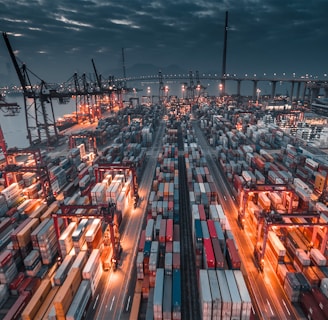Exploring Logistics and Supply Chain Trends in India
"From 13-14% logistics cost, we should all aim to bring it to single-digit as soon as possible" – PM Narendra Modi
12/1/20223 min read


"From 13-14% logistics cost, we should all aim to bring it to single-digit as soon as possible" – PM Narendra Modi
"India, which is determined to become developed, now has to compete more with developed countries, so everything should be competitive" – PM Narendra Modi
These were some statements made by the Prime minister in September 2022 during the launch of the National Logistics Policy. We must talk about logistics and supply chain in India with talking about the policy since it has the potential to help create a strong foothold in the global market if implemented correctly. The approach is an effort to improve the efficiency of the existing logistics ecosystem of the country. The process is crucial if India wants to be noticed by major manufacturers as a potential destination for their China plus one strategy.
The manufacturing industry is witnessing substantial growth in India. The foreign direct investment (FDI) inflow to India in this sector stood at USD 58.77 billion in FY 21-22, according to the Department for Promotion of Industry and Internal Trade (DPIIT). Increasing investments are clubbed with robust demand from sectors like appliances and consumer electronics (ACE) which is expected to grow. Policy support such as PLI schemes worth billions of dollars in Auto, drone, advanced chemical cell industries, and others alike are expected to boost the manufacturing industry in the country. NITI Aayog suggests that the government has the potential to become a global manufacturing hub.
With manufacturing comes a very crucial counterpart that cannot be ignored. If developed simultaneously, it could help the projected growth of the manufacturing industry. Logistics and supply chain forms a firm bond with the manufacturing sector. With the focus on "Make in India," the country also needs a robust logistics system to augment goods manufacturing. The competitive edge India is trying to build will be on the back of manufacturing infrastructures supported closely by the country's logistics and supply chain network.
India's logistics sector currently accounts for an estimated 14% of the GDP, employing over 20 million people as their primary income. The catch here is that the unorganized sector accounts for over 90% of the logistics sector, including small-scale truck owners, warehouse owners, brokers, freight forwarders, and others. On top of this, doing logistics business in India requires a long list of permissions, including 20 government agencies, 37 export promotion councils, and 500 certifications.
On the bright side, India scored over 90% in United UNESCAP's Global Survey on Digital and Sustainable Trade Facilitation in 2021 from a mere 63% in 2015. Thus the initiatives by the government and proper, timely implementation will play a crucial role in the future. Various policies introduced in the last couple of years will help form a multi-modal network of logistics and warehousing which will lead to efficient movement and storage of goods across the country.
With logistics improved, storage is another angle to look at. If we can transport products smoothly, we also need a better and more efficient solution for storage. Here, warehouses and dark stores come into play. According to a Deccan Herald article, the warehousing market in the country grew a whopping 62% year on year in eight major cities in India, accounting for a total of 51.3 million sq. ft. In-city logistics such as dark stores are also gaining traction with the meteoric rise of platforms such as Zepto, Dunzo, Swiggy Instamart, and others. With the post-pandemic increase in consumption, the consumption trend is likely to grow beyond the pre-pandemic levels, which will be catered to by a booming logistics network and an efficient warehousing system across the nation.
Warehousing service plays an essential role in the entire logistics and supply network system. It helps reduce the overall cycle time, efficient inventory management, and centralize goods in a crucial location. Technology and digitalization have to play indistinguishable roles in the coming years. With logistics getting smarter with last-mile deliveries and companies competing in next-day or two-day delivery promises, having warehouses in economically relevant locations can make or break a business.
Innovations in logistics such as drone deliveries, RFID tagging of products, GPS capability for real-time shipment tracking, AI for streamlining pick accuracy and efficiency, etc., all require a robust warehousing solution customized for a specific use case of a sector. All these factors are going to have a positive impact on the demand for warehouses in the country.
With the trifecta of manufacturing, logistics, and supply chain getting a boost from changing market trends, government policies, and geopolitical reasons, there is a potential that is on the cusp of disruption in the warehousing business.
